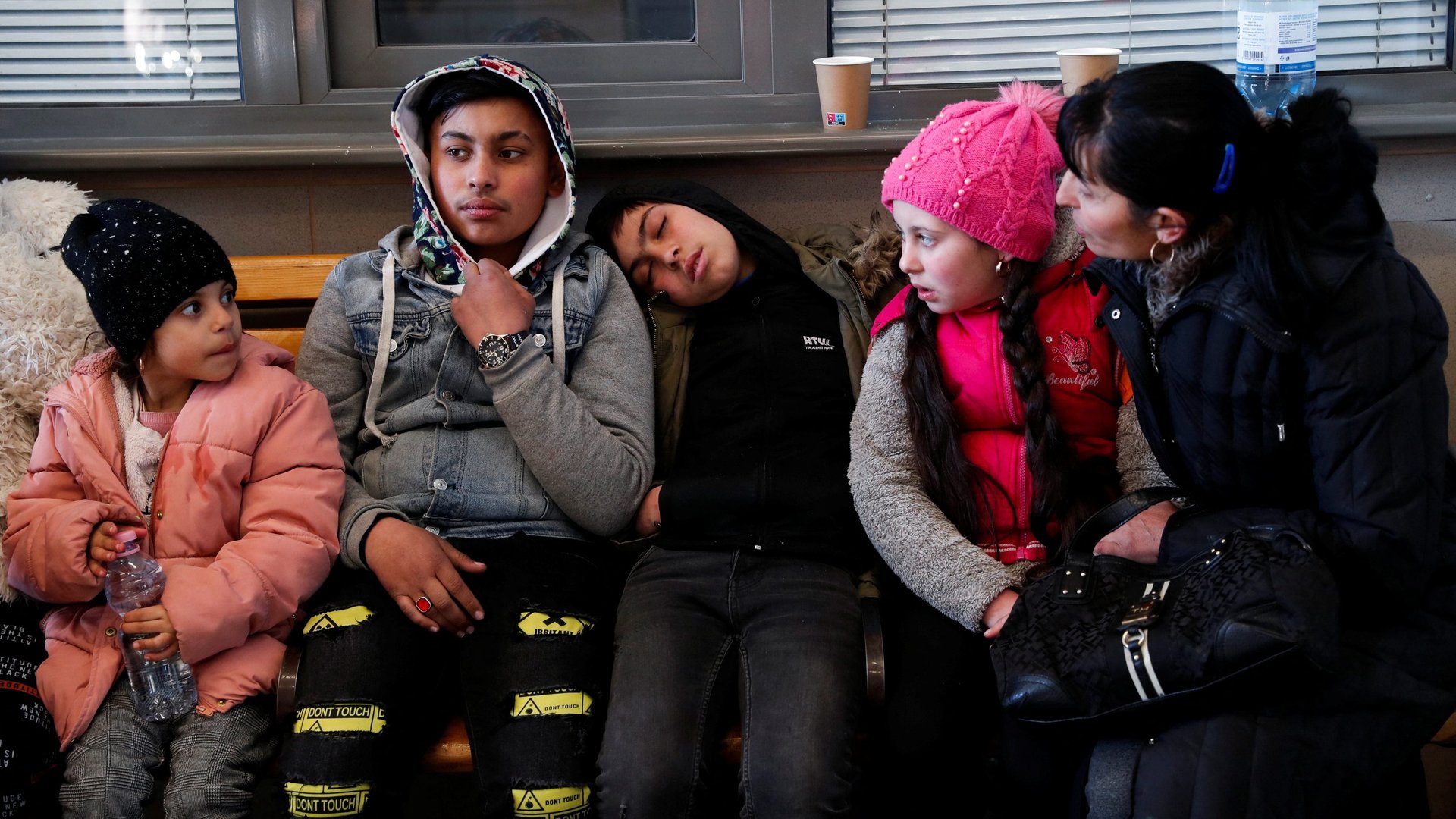To help Ukrainian refugees, the EU may trigger a 21-year-old refugee law for the first time
EU interior ministers met Sunday (Feb. 27) to debate triggering a never-before-used law to pave the way for Ukrainian refugees to flee the Russian invasion. EU interior commissioner Ylva Johansson plans to formally propose it to the bloc on March 3. So far, at least 300,000 Ukranians have entered the EU, with more likely in the coming days, Johansson said in a press video on Sunday.


EU interior ministers met Sunday (Feb. 27) to debate triggering a never-before-used law to pave the way for Ukrainian refugees to flee the Russian invasion. EU interior commissioner Ylva Johansson plans to formally propose it to the bloc on March 3. So far, at least 300,000 Ukranians have entered the EU, with more likely in the coming days, Johansson said in a press video on Sunday.
The Temporary Protection Directive would allow Ukrainians to enter EU member states for three years without formally applying for asylum. The program is strictly voluntary: Each country would be able to decide for itself how many refugees to accept, and each arriving family would have a say in which country they went to.
Enacted in 2001 after the wars in Yugoslavia and Kosovo, the directive has never been used, in part because of concerns that it would be a step toward a mandatory refugee resettlement program, which some EU countries oppose. But the crisis in Ukraine appears to have shifted the terms of Europe’s refugee debate. Hungary and Poland—two of the countries most opposed to taking in refugees during the 2015 migrant crisis—have thrown open their doors to Ukrainians.
Poland, Hungary, and Austria change their position on refugees
Polish interior minister Mariusz Kaminski pledged the country is ready for “a wave of refugees” and will take in “as many as there will be at our borders.” Hungarian prime minister Viktor Orban, who in 2016 called migrants “a poison,” said of Ukrainians, “we’re prepared to take care of them, and we’ll be able to rise to the challenge quickly and efficiently.”
Austrian chancellor Karl Nehammer, who sought to block the arrival of Afghan refugees last year, explained to the Krone (German) why he supports the arrival of Ukrainian refugees now. “It’s different in Ukraine than in countries like Afghanistan,” he said, according to a New York Times translation. “We’re talking about neighborhood help.”